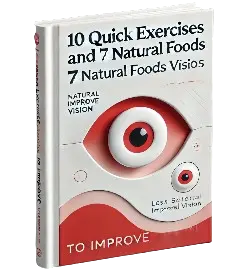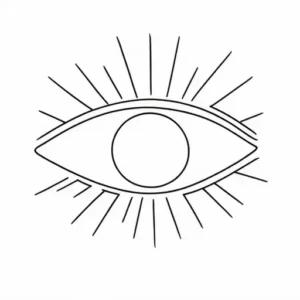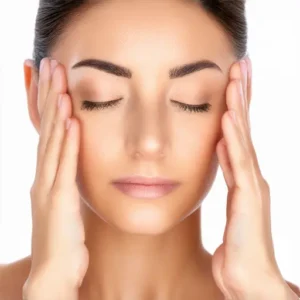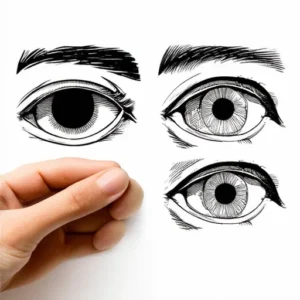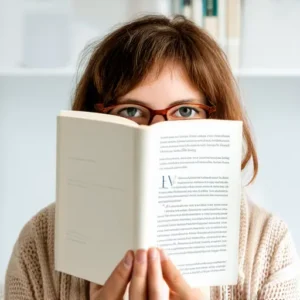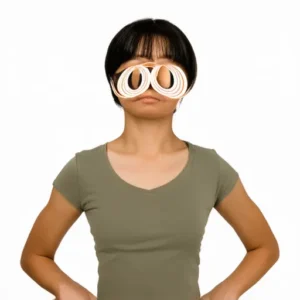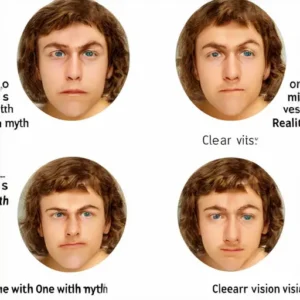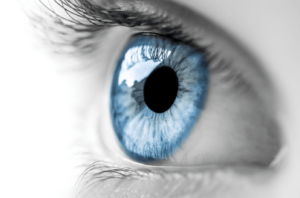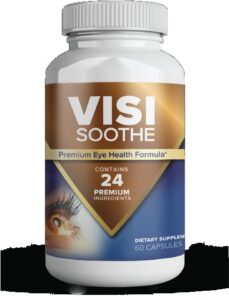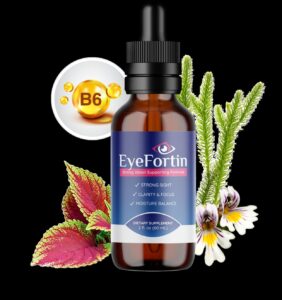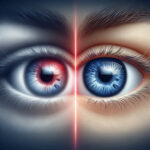* **
Why Does My Eye Power Keep Increasing? (And How to Stop It)
Ever found yourself squinting at your phone or struggling to read street signs that used to be crystal clear? If you’re constantly wondering, “Why is my vision getting worse?”, you’re in good company. Many of us experience gradual changes in our eyesight—whether from aging, daily habits, or health factors. Let’s break down why this happens and what you can actually do about it.
The Real Reasons Your Vision Keeps Changing
Before you panic about your latest prescription update, know this: vision changes are often normal. But understanding the “why” helps you take control. Here’s what’s likely going on:
Your Eyes Are Growing (Yes, Even as an Adult)
- For kids/teens: Eyeballs literally lengthen, causing myopia to progress—sometimes rapidly.
- After 40: That stiffening feeling when reading menus? That’s presbyopia—your eye’s lens losing flexibility.
Daily Habits That Sneakily Affect Your Eyes
Think about your routine: hours scrolling, poor lighting, minimal outdoor time? These add up. One patient told me, “I didn’t connect my Netflix binges to my worsening vision until my eye doctor asked about screen time.”
Health Conditions That Play a Role
- Diabetes (sugar spikes damage tiny eye blood vessels)
- Uncontrolled high blood pressure
- Cataracts—like looking through a foggy windshield
Red Flags You’re Due for an Eye Check
Your eyes send signals when something’s off. Don’t ignore these:
The “Blurry Reality” Test
If your year-old glasses feel like looking through Vaseline, your prescription’s probably outdated.
That 3 PM Headache Isn’t Just Stress
Frequent headaches after computer work? Your eyes might be straining to compensate for vision changes.
Night Driving Becoming a Challenge?
Struggling with glare from headlights or dim restaurant lighting? This often precedes a prescription update.
Pro Tips to Slow Down Vision Changes
While we can’t stop aging (unfortunately), these habits make a real difference:
The 20-20-20 Rule Isn’t Just TikTok Advice
- Every 20 minutes, look at something 20 feet away for 20 seconds. Pro tip: Set phone reminders until it becomes habit.
- Position screens at arm’s length—no “nose-to-phone” scrolling.
Eat Like Your Eyes Depend On It (Because They Do)
Load up on leafy greens, fatty fish, and colorful veggies. One study showed kids with higher omega-3 intake had slower myopia progression.
Digital Strain: The Modern Vision Villain
Let’s talk screens—because let’s face it, they’re not going anywhere.
Blue Light Glasses: Helpful or Hype?
While they won’t prevent prescription changes, they can reduce eye fatigue and improve sleep quality—which indirectly helps eye health.
Your Workspace Matters More Than You Think
Adjust screen brightness to match your environment. Too bright in a dark room? That’s like staring into a flashlight.
When to Consider Medical Options
Sometimes lifestyle tweaks aren’t enough. Here’s when to explore next steps:
LASIK Isn’t Just for the Rich and Famous
Good candidates have stable prescriptions for 1+ years. As one surgeon told me, “We’re not stopping your eyes from changing—we’re correcting where they’re at now.”
Don’t Play the Waiting Game With These Symptoms
- Sudden floaters or flashes (could signal retinal detachment)
- Persistent eye pain or redness
- Double vision that comes and goes
Myths We Need to Stop Believing
“Wearing Glasses Makes Your Eyes Lazy”
Nope. That’s like saying crutches make broken bones weaker. Glasses correct focus—they don’t change your eye structure.
“Carrots Give You Superhuman Vision”
While vitamin A helps, you’d need to eat bushels daily. A balanced diet beats carrot overload.
The Bottom Line
Vision changes can feel unsettling, but knowledge is power. While some factors are out of our control (thanks, genetics), small daily choices add up. Get those regular eye exams—they’re like physicals for your peepers. And if something feels off? Don’t wait. Your future self will thank you for taking action today.
Quick Reality Check:
- Kids’ eyes grow; adults’ lenses stiffen—both change vision naturally
- Screen time won’t blind you, but balance matters
- When in doubt, get it checked out (no symptom is “too small”)
Now over to you—have you noticed vision changes during life transitions? Share your experiences below!
Is It Normal That My Eye Power Is Increasing?
Is It Normal for My Eye Prescription to Keep Getting Stronger?
If you’ve been noticing your glasses or contacts don’t seem as effective as they used to be, you’re probably wondering: “Should I be worried about my increasing eye power?” Here’s the thing – some vision changes are completely normal, while others might signal something worth checking out. Let’s break down what’s typical, when to be concerned, and most importantly, how to keep your vision sharp for years to come.
Understanding Why Your Eyesight Might Be Changing
First, let’s clarify what we mean by “eye power” – it’s not about superhuman vision (unfortunately), but rather how your eyes focus light.
Decoding Your Prescription
When your eye doctor talks about eye power, they’re referring to diopters – those numbers on your prescription:
- Negative numbers (-) mean you’re nearsighted (hello, blurry road signs)
- Positive numbers (+) indicate farsightedness (when menus suddenly look like abstract art)
- Higher numbers mean you need stronger correction
Why Your Prescription Might Be Creeping Up
Several factors can send those numbers climbing:
- Father Time (especially after 40 when reading menus becomes a challenge)
- Family history (thanks, genetics)
- Too much screen time (we’re all guilty)
- Poor lighting (why do restaurants think candles are adequate?)
- Health conditions like diabetes or cataracts
Normal Aging vs. Red Flags
Vision changes follow predictable patterns:
- Kids/Teens: Nearsightedness often gets worse
- 20s-30s: Things usually settle down
- 40+: Reading glasses become your new best friend
But if your vision’s changing rapidly or unpredictably, that’s your cue to see an eye doctor.
When Should You Actually Worry?
Not every vision change spells trouble. Here’s what’s typically normal at different ages:
What’s Expected When
- Elementary School: Up to -1.00 diopter change per year
- High School: Changes slow down, usually stabilizing by graduation
- Young Adulthood: Should be pretty stable (enjoy it while it lasts)
- 40+: Welcome to reading glasses territory
Warning Signs You Shouldn’t Ignore
Book an appointment if you notice:
- Sudden vision changes (like your prescription changed overnight)
- Constant eye strain or headaches
- Night driving becoming scarier than horror movies
- Floaters, flashes, or wavy lines
- Vision that’s as unpredictable as the weather
When to Call the Eye Doc
Make that appointment if:
- Your prescription jumps more than -0.50 yearly as an adult
- Vision problems are messing with your daily life
- You’ve got pain, redness, or other weird symptoms
Daily Habits That Might Be Messing With Your Vision
Your everyday routines could be contributing to those prescription changes.
The Screen Time Struggle
Our digital addiction can lead to:
- Temporary blurry vision from eye fatigue
- Faster myopia progression in kids
- Dry eyes from forgetting to blink (we’ve all been there)
You Are What You Eat (And So Are Your Eyes)
Feed your eyes with:
- Leafy greens and eggs (for lutein and zeaxanthin)
- Fatty fish and nuts (hello, omega-3s)
- Colorful fruits and veggies (vitamins A, C, E)
- Meat and legumes (zinc power)
Simple Eye Care Hacks
Try these easy protectors:
- The 20-20-20 rule: Every 20 minutes, look 20 feet away for 20 seconds
- Sunglasses that actually block UV rays
- Proper lighting (no more reading by phone light)
- Actual sleep (your eyes need rest too)
Health Conditions That Can Change Your Vision
Some medical issues can speed up prescription changes.
Myopia on the Move
Nearsightedness often progresses due to:
- Family history (if your parents were blind as bats…)
- Too much close-up work without breaks
- Not enough outdoor time (sunlight helps regulate eye growth)
Farsightedness and Aging Eyes
After 40, you might notice:
- Menus mysteriously blurring (presbyopia strikes)
- Growing dependence on reading glasses
- Occasional distance vision changes
Other Health Culprits
Conditions that can affect vision include:
- Diabetes (blood sugar swings can change your prescription)
- Cataracts (like looking through a foggy window)
- Glaucoma (silent thief of sight)
- Thyroid eye issues
Could Your Glasses Be Part of the Problem?
Ironically, your vision correction might contribute to changes.
When Your Prescription Is Off
Wrong lenses can cause:
- Eye strain that temporarily blurs vision
- Faster myopia progression in kids
- Headaches that ruin your day
Signs You Need New Glasses
Watch for:
- Squinting like you’re in a bad spy movie
- Headaches after reading or screen time
- Certain distances becoming problematic
- Eyes feeling exhausted by evening
Why Regular Check-Ups Matter
Get your eyes checked:
- Every 2 years if you have no issues
- Annually if you wear glasses or have risk factors
- Whenever you notice changes
Slowing Down Vision Changes
While we can’t stop time (unfortunately), these strategies might help stabilize your vision.
Eye Exercises That Actually Help
Try these to reduce strain:
- Palming (warm hands over closed eyes – instant relaxation)
- Focus shifting (near to far and back)
- Figure-eight tracing (pretend your eyes are an Etch A Sketch)
Eat Your Way to Better Vision
Load up on:
- Carrots and sweet potatoes (vitamin A boost)
- Spinach and kale (eye-protecting antioxidants)
- Salmon and sardines (omega-3 powerhouses)
- Oranges and berries (vitamin C for eye health)
Modern Eye Protection
Consider:
- Blue light glasses for screen marathons
- Anti-reflective coatings on lenses
- Positioning monitors slightly below eye level
- Humidifiers to combat dry office air
Vision Myths Busted
Let’s clear up some common eye myths.
“Glasses Make Your Eyes Weaker” – Nope!
Truth: Properly prescribed glasses correct vision – they don’t weaken your eyes. Not wearing needed glasses actually strains your eyes more.
“Only Kids’ Eyes Change” – Not Quite
Reality: While kids often experience myopia progression, adults get presbyopia and can have other vision changes too.
Can Your Eyesight Actually Improve?
Sometimes, yes! You might experience:
- Mild myopia improvement in your 20s
- Vision changes after cataract surgery
- Fluctuations if you have diabetes
Wrapping Up
Key Points to Remember
- Some prescription changes are normal, especially in kids and after 40
- Your daily habits significantly impact your eye health
- Regular eye exams catch problems early
- Good eye care can help maintain stable vision
When to Get Professional Advice
If you’re concerned about your changing vision, don’t put off seeing an eye specialist. Catching issues early makes all the difference in maintaining great vision throughout your life. After all, your eyes are your windows to the world – worth taking care of, right?
Have you noticed changes in your vision? What’s been your experience? Drop your thoughts or questions in the comments – let’s chat about eye health!
Why Meir Schneider Vision for Life Is Changing Lives
Could You Improve Your Vision Naturally? Meet Meir Schneider
What if you could ditch the glasses, avoid surgery, and still see better? That’s the promise behind Meir Schneider Vision for Life—a game-changing approach that’s helped thousands reclaim their sight through simple exercises, lifestyle tweaks, and scientifically proven techniques. But who’s the man behind this vision revolution, and why is his method turning heads worldwide?
The Unlikely Visionary: Meir Schneider’s Story
Here’s something that’ll make you look twice: Meir Schneider was born legally blind. After congenital cataracts and multiple botched surgeries, doctors said he’d never see. But through sheer determination and self-developed techniques, he went from near-blindness to functional vision. Talk about walking the walk! His personal breakthrough became the foundation for Meir Schneider Vision for Life, a program that’s helping people take their eye health into their own hands.
Why This Approach Is Different
Forget everything you’ve heard about “permanent” vision damage. Schneider’s method is built on a radical idea: your eyes can change and improve. While traditional treatments slap on bandaids (hello, glasses and surgeries), his approach goes deeper by focusing on:
- Your brain’s superpower: Neuroplasticity—how your brain can rewire itself to process vision better
- Eye gym: Targeted exercises that strengthen those often-neglected eye muscles
- Whole-body health: Because what you eat and how you live impacts those peepers more than you think
Why More People Are Choosing Natural Vision Improvement
With LASIK horror stories and glasses that seem to get thicker every year, it’s no wonder folks are exploring alternatives. Schneider’s track record—from reversing myopia to managing cataracts—has made his program a beacon of hope for natural vision seekers everywhere.
The Science Behind Seeing Better Naturally
Skeptical? You’re not alone. But here’s the thing—science backs this up. Schneider’s methods align with cutting-edge research on how adaptable our eyes and brains truly are.
How Exercising Your Eyes Actually Works
Think of your eyes like any other muscle—they get weak without use and strong with training. Schneider’s exercises target three key areas:
- Boosting blood flow (yes, your eyes need good circulation too)
- Releasing tension in those overworked eye muscles
- Training your brain to process visual information more efficiently
Your Brain’s Role in Better Vision
Here’s where it gets fascinating: neuroplasticity means your brain can literally learn to see better. Studies show that consistent visual training can improve how your brain interprets signals—even for degenerative conditions. It’s like software updates for your visual system!
Real People, Real Results
The proof’s in the pudding. Schneider’s program has helped everyone from kids with severe nearsightedness to grandparents struggling with reading glasses. One standout case? A woman who reduced her cataract opacity by half through daily exercises and dietary changes. Not too shabby for “just” natural methods!
The Nuts and Bolts of Meir Schneider’s Method
This isn’t some 30-day miracle cure—it’s a lifestyle shift. Here’s what you’re signing up for:
Why Eye Exercises Aren’t Just Hocus Pocus
Just like physical therapy helps injured knees, targeted eye movements can restore flexibility and strength. Techniques like palming (think spa day for your eyes) and dynamic focusing are the bread and butter of the program.
Feed Your Eyes Right
Schneider’s big on nutrition—loading up on eye-friendly antioxidants (looking at you, leafy greens), staying hydrated, and giving those screens a rest before bed. Your eyes will thank you.
Breaking Up With Your Glasses
Here’s the uncomfortable truth: glasses can become a crutch. While they help in the short term, they might actually weaken your eyes over time. Schneider’s approach helps wean you off them—safely and gradually.
Tailored Solutions for Common Eye Issues
One size doesn’t fit all when it comes to vision. Here’s how this approach adapts:
For the Nearsighted Crowd
By strengthening those ciliary muscles (the eye’s focusing mechanism), many users report slowing—or even reversing—their myopia progression.
When Reading Menus Gets Hard
Presbyopia (that annoying need for reading glasses after 40) isn’t inevitable. Specific exercises can help restore your near-focus flexibility.
Support for Serious Conditions
While not a cure-all, Schneider’s techniques may help manage cataract and glaucoma symptoms by improving circulation and reducing pressure. Every little bit helps!
Why Go Natural? The Benefits Speak for Themselves
What makes this approach worth your while?
Playing the Long Game With Your Eye Health
Unlike surgeries with their risks and side effects, this method builds sustainable improvements that last.
More Than Just Clearer Vision
Users often report unexpected bonuses—fewer headaches, better sleep, and a confidence boost from ditching those specs.
Kind to Your Wallet Too
No expensive procedures or yearly prescription updates—just your commitment to showing up for your eyes daily.
Your Starter Kit for Better Vision
Ready to take the plunge? Here’s how to begin:
Try These Eye Openers at Home
- Palming: Warm your hands like you’re about to receive great news, then cup them over closed eyes for 5 minutes of deep relaxation.
- Figure eights: Trace lazy eights in the air with your eyes to improve mobility (no one will even know you’re doing it!).
Find Your Vision Tribe
Check out the official Meir Schneider Vision for Life website for certified coaches and workshops near you.
Patience, Grasshopper
This isn’t an overnight transformation. Think weeks to months of consistent practice—but isn’t your vision worth it?
Busting Myths About Natural Vision Improvement
Let’s clear up some common misconceptions:
“You Can’t Train Your Eyes to See Better”
Tell that to the thousands who’ve done exactly that. Science and success stories don’t lie.
The Real Deal About Eye Exercises
No, they’re not magic—but show me any fitness routine that works without consistency and effort.
Why Some People See Results Faster
Age, condition severity, and how religiously you practice all play a role. Your mileage may vary—but progress is possible.
The Bottom Line
Meir Schneider Vision for Life is more than a program—it’s permission to believe your eyes can improve. By working with your body’s natural healing abilities, you’re not just fixing symptoms; you’re investing in lifelong visual wellness. The question is: are you ready to see what’s possible?
We’d love to hear from you—have you tried natural vision improvement? What was your experience? Drop us a comment below!
The Surprising Link Between Sleep and How to Make Your Eyesight Better
Could Better Sleep Be the Secret to Sharper Vision?
What if the key to improving your eyesight was something you’re already doing every night? While we often turn to carrots, eye exercises, or new glasses for better vision, quality sleep might be the unsung hero of eye health. Skimping on shut-eye does more than leave you yawning—it can lead to dry, irritated eyes, blurry vision, and even long-term damage. Let’s uncover the fascinating connection between sleep and vision, bust some common myths, and share easy ways to wake up with brighter, healthier eyes.
Why Your Eyes Crave Quality Sleep
Think of your eyes as marathon runners—they’re working overtime from the moment you wake up. Sleep is their much-needed recovery time, allowing them to repair tissue, replenish moisture, and clear out daily wear and tear. Without this downtime, your peepers become overworked employees—exhausted, strained, and more prone to problems.
The Eye-Opening Effects of Sleep Deprivation
Regularly missing sleep isn’t just about dark circles—it’s been tied to serious conditions like dry eye syndrome, glaucoma, and optic nerve damage. When you shortchange your sleep, your eyes miss their nightly maintenance window, leaving them vulnerable to inflammation and accelerated aging.
What You’ll Discover in This Post
We’ll explore everything from how REM sleep acts like a spa treatment for your eyes to simple bedtime tweaks that reduce strain. And don’t worry—we’ll keep it real about what sleep can (and can’t) do for your vision.
How Sleep Naturally Boosts Your Eye Health
Sleep isn’t just passive rest—it’s an active repair session for your eyes. Here’s the behind-the-scenes look at how different sleep stages work their magic.
REM Sleep: Your Eyes’ Overnight Refresh
When you hit REM sleep (that dream-filled stage), your eyes get busy behind closed lids. This isn’t just random movement—it’s essential for:
- Fueling up: Increased blood flow delivers oxygen and nutrients to tired eyes
- Staying lubricated: Tears replenish to prevent that gritty morning feeling
- Taking out the trash: Toxins from daily strain get flushed away
Deep Sleep: The Ultimate Stress Reliever
During deep sleep, your body dials down inflammation—the culprit behind puffy, red eyes. It also gives those tiny focusing muscles a much-needed break, helping them recover from hours of screen time or reading.
Melatonin: Your Eye’s Nighttime Bodyguard
This sleep hormone moonlights as an antioxidant, protecting your retina from damage. Night owls and shift workers take note—low melatonin levels are linked to higher risks of age-related vision problems.
Sleep Problems That Could Be Hurting Your Vision
Not all sleep is created equal. Some common issues can undermine your eye health—even if you’re technically clocking enough hours.
When Counting Sheep Leads to Dry Eyes
Tossing and turning doesn’t just leave you tired—it can literally dry out your eyes. Research shows insomnia sufferers are three times more likely to develop dry eye disease. Ouch!
Sleep Apnea’s Sneaky Effect on Vision
Those nighttime breathing pauses don’t just disrupt sleep—they starve your optic nerve of oxygen, increasing glaucoma risk. If you snore loudly or wake up gasping, it’s worth getting checked.
The Blue Light Dilemma
Scrolling before bed? You’re double-whammied your eyes—suppressing melatonin while straining your focus. Try the 20-20-20 rule (every 20 minutes, look 20 feet away for 20 seconds) and enable night mode after dark.
Sleep Hacks for Healthier Eyes
A few simple changes to your nightly routine can make a world of difference for morning eye comfort.
How Many Hours Do Your Eyes Really Need?
7-9 hours is the sweet spot for most adults. Regularly dipping below 6 hours? You’re rolling the dice on eye strain and faster vision changes.
Your Pillow Matters More Than You Think
Back sleeping is MVP for preventing morning puffiness. Side sleeper? A silk pillowcase reduces friction that can irritate eyes.
Why Pitch Black is Best
Even small amounts of light can disrupt your eyes’ repair work. Blackout curtains or a good sleep mask help maximize melatonin production and retinal recovery.
Eat, Sleep, See Repeat: The Nutrition Connection
What’s on your plate can support both better sleep and sharper vision.
Vision-Friendly Foods That Help You Sleep
- Salmon: Omega-3s fight dry eye while supporting melatonin
- Almonds: Their magnesium relaxes eye muscles and improves sleep
- Kiwi: This fuzzy fruit helps you fall asleep faster
Hydration Hacks for Clear Eyes
Dehydration leads to thicker, less effective tears. Stay hydrated during the day, but ease up 2 hours before bed to avoid midnight bathroom runs.
Daytime Habits That Supercharge Your Sleep Benefits
Combine these with good sleep for maximum eye gains.
Quick Eye Exercises to Try
Before bed: Warm your palms and gently cup your closed eyes (palming). In the morning: Roll your eyes in circles to boost circulation.
Myth Buster: Can Sleep Fix All Vision Problems?
Let’s get real about what sleep can—and can’t—do for your eyesight.
“Extra Sleep Means 20/20 Vision”—True or False?
False. While sleep supports eye health beautifully, it won’t correct refractive errors. You’ll still need those glasses or contacts if your eye doctor prescribed them.
The Bottom Line
Getting quality sleep is one of the easiest ways to support your eye health naturally. From reducing daily strain to protecting against long-term damage, good sleep works hand-in-hand with other healthy habits. Tonight, why not start small? Dim those lights, put away the phone, and give your hardworking eyes the recovery time they’ve earned.
Can You Really Make Eyesight Better Without Surgery?
Can You Really Improve Your Eyesight Without Surgery?
Ever found yourself squinting at a menu in a dimly lit restaurant or struggling to read the fine print on a medicine bottle? If so, you’re not alone—and you’ve probably wondered: Is there a way to sharpen my vision without going under the knife?
The truth is, while you might not be able to completely undo conditions like nearsightedness or astigmatism, there are science-backed ways to support your eye health, reduce strain, and potentially slow down vision decline. And the best part? None of them involve scalpels or scary procedures.
Why More People Are Choosing Natural Vision Improvement
From office workers glued to computer screens to middle-aged adults noticing their arms aren’t “long enough” to read text anymore, natural vision improvement methods are having a moment. And it makes sense—they’re affordable, low-risk, and can work hand-in-hand with your current glasses or contacts.
Let’s Bust Some Vision Myths Right Now
Before we get started, let’s clear up some common misconceptions. No, eating a bushel of carrots won’t magically give you eagle-eye vision (though they do help!). And while eye exercises can work wonders for strain, they won’t “fix” serious refractive errors. That said, research shows that simple lifestyle tweaks—from what you eat to how you use screens—can genuinely support your eye health.
How Your Eyes Work (And Why Things Get Blurry)
Think of your eyes like high-tech cameras. Light comes in through the cornea, gets focused by the lens, and creates an image on the retina. When this system isn’t perfectly aligned—maybe your eyeball’s a bit too long (hello, nearsightedness) or your lens is getting stiffer with age—things start looking fuzzy.
Common vision hiccups include:
- Myopia: When road signs look like abstract art
- Hyperopia: When your phone screen might as well be written in hieroglyphics
- Astigmatism: When everything has a funhouse mirror effect
Your Daily Habits Are Shaping Your Vision
Beyond what your parents passed down to you genetically, these everyday factors play a huge role in your eye health:
- Your diet: Skimping on key nutrients? Your retina will notice.
- Screen marathons: That 8-hour Netflix binge isn’t doing your peepers any favors.
- Sun exposure: Those UV rays age your eyes faster than a college all-nighter.
- Smoking: Doubles your risk for cataracts—yikes!
Eating Your Way to Better Vision
You really are what you eat when it comes to your eyes. Here’s how to feed your vision:
Vision Superfoods
- Vitamin A All-Stars: Carrots (duh), sweet potatoes, spinach—your retina’s best friends
- Vitamin C Champs: Oranges, bell peppers—nature’s cataract fighters
- Omega-3 Heroes: Salmon, chia seeds—the dry eye antidote
- Blue Light Bodyguards: Kale, eggs (thanks to lutein & zeaxanthin)
Don’t Forget to Hydrate
Dehydration can make your eyes feel like the Sahara. Aim for 8-10 glasses of water daily, and maybe go easy on that third cup of coffee.
When Food Isn’t Enough
If your diet’s lacking, these supplements might help:
- AREDS2 formula: The gold standard for slowing macular degeneration
- Bilberry extract: Might help with night vision (jury’s still out)
Gym Time for Your Eyes
Just like hitting the gym strengthens your muscles, these eye exercises can reduce fatigue and improve focus.
The 20-20-20 Rule (Your New Best Friend)
Every 20 minutes, look at something 20 feet away for 20 seconds. It’s the simplest trick to prevent digital eye strain.
Try These Eye Workouts
- Pencil push-ups: Hold a pencil at arm’s length, slowly bring it closer while focusing until it doubles—great for convergence issues
- Figure eights: Trace imaginary eights with your eyes to improve flexibility
Do They Actually Work?
Science says: They can help with strain and might slow kids’ myopia progression. But if you’re expecting to toss your glasses? Probably not happening.
Small Changes, Big Vision Benefits
Little daily tweaks can add up to major long-term gains for your eyes.
Be Screen Smart
Use blue light filters, take frequent breaks, and give your eyes a screen curfew before bedtime.
Set Up Your Space Right
Good lighting (no glare!) and positioning screens at eye level can save you from neck and eye strain.
Sleep and Stress Matter
Skimping on sleep leads to dry, irritated eyes. Chronic stress? It can increase eye pressure—not great news for glaucoma risk.
Alternative Approaches Worth Considering
Some people swear by these methods—here’s what the research actually says.
Acupuncture for Eyes
Might improve blood flow to your eyes, but evidence for serious conditions is spotty.
The Bates Method—Helpful or Hype?
Palming and sunning might relax your eyes, but don’t expect miracles for refractive errors.
Herbal Options
Ginkgo biloba (circulation) and eyebright (irritation) show promise but need more study.
When to Call in the Pros
Natural methods have their limits. Here’s when to see an eye doctor:
Red Flags
- Sudden vision changes (floaters, flashes, dark spots)
- Persistent headaches or eye pain
- Struggling with night vision or color perception
Why Regular Check-ups Matter
Comprehensive eye exams every 1-2 years can catch issues like glaucoma early, when they’re most treatable.
Non-Surgical Options
Orthokeratology (special contacts worn at night) can reduce daytime dependence on glasses.
Wrapping It Up
Your Natural Vision Improvement Cheat Sheet
- Load up on leafy greens, colorful veggies, and omega-3s
- Practice the 20-20-20 rule religiously
- Protect your eyes from UV and blue light
- Prioritize sleep and stress management
The Bottom Line
While you might not reverse your prescription naturally, these strategies can boost eye health, slow decline, and improve comfort. Combine them with regular eye exams for the best shot at lifelong clear vision. Have you tried any natural vision tricks? We’d love to hear what worked (or didn’t) for you in the comments!
Leo Angart Astigmatism: A Breakthrough for Blurry Vision
Struggling with Astigmatism? Leo Angart’s Natural Approach Might Be Your Answer
Does this sound familiar? You squint at street signs, rub your tired eyes after screen time, or feel chained to your glasses because of astigmatism. You’re definitely not alone—millions share this frustration. But here’s something most eye doctors won’t tell you: glasses and contacts aren’t your only options. Leo Angart’s astigmatism techniques offer a fresh perspective that could change how you see the world—literally.
Meet Leo Angart: The Vision Pioneer Who Walked the Talk
Picture this: a man so determined to fix his own blurry vision that he spent decades cracking the code to natural eyesight improvement. That’s Leo Angart. After ditching his glasses for good, he developed simple yet powerful exercises based on a radical idea—that our eyes can actually heal themselves. His methods tap into your brain’s amazing ability to rewire itself (hello, neuroplasticity!) through consistent practice.
Astigmatism Demystified: More Than Just a “Blurry Eye” Problem
Here’s the science made simple: astigmatism happens when your eye’s front surface isn’t perfectly round (like a basketball) but more oval (like a football). This quirky shape scatters light instead of focusing it sharply. The result?
- That annoying “always slightly out of focus” feeling
- Eyes that tire faster than your phone battery
- Headaches that creep up after reading
- Night driving becoming a guessing game
While glasses just compensate for the irregular shape, Leo’s approach is like physical therapy for your eyes—it helps retrain them to see better naturally.
Why Leo’s Method Turns Traditional Eye Care Upside Down
Imagine telling a pianist with stiff fingers to just wear glove-support instead of practicing scales. That’s essentially what conventional astigmatism treatment does. Leo’s exercises? They’re like daily piano practice for your eye muscles—strengthening, relaxing, and bringing them into better harmony.
The Brain-Eye Connection: Science Behind the Method
Here’s where it gets fascinating. Your brain is like an ultra-adaptive computer that can actually learn to compensate for your eyes’ imperfections. Leo’s techniques leverage neuroplasticity—your nervous system’s superpower to reorganize itself. With the right exercises, you’re essentially teaching your brain to “Photoshop” clearer images from what your eyes provide.
Eye Gym: Simple Exercises That Pack a Punch
Leo’s routine isn’t about fancy equipment or hour-long sessions. Some of his most effective techniques:
- Palming: Like a mini spa treatment for your eyes (warm hands + darkness = instant relief)
- Eye aerobics: Tracing shapes to loosen up stiff eye muscles
- Focus ping-pong: Alternating between near and far objects to build flexibility
Busting the Biggest Astigmatism Myth
“Once you have astigmatism, you’re stuck with it”—sound familiar? That’s like saying you can’t improve your golf swing because you’re not Tiger Woods. Emerging research shows our visual system is way more adaptable than we thought. While results vary, many of Leo’s students have significantly reduced their dependence on corrective lenses.
Your Personalized Roadmap to Clearer Vision
Whether your astigmatism prescription reads like a small fraction or makes you feel like you’re looking through a fishbowl, these techniques can help. Here’s how to dive in:
The 3-Minute Daily Routine Anyone Can Do
- Morning eye wake-up: 30 seconds of palming while your coffee brews
- Commuter training: Focus shift between dashboard and distant landmarks
- Wind-down ritual: Gentle figure eights before bed
Real People, Real Results
Take Sarah, a graphic designer who cut her astigmatism prescription in half after six months. Or Mark, who finally passed his driver’s test without glasses after years of trying. These aren’t miracles—just the brain and eyes working together better.
Supercharging Your Results
For fastest improvement, pair Leo’s exercises with:
- The 20-20-20 rule (every 20 minutes, look 20 feet away for 20 seconds)
- Reading in proper lighting—no more straining in dim cafes
- Hydration (your eyes love water as much as your skin does)
Solving Everyday Vision Struggles Naturally
These methods aren’t just theory—they tackle real problems you face daily:
Bye-Bye, Eye Strain
Those tension headaches after computer marathons? Often caused by eyes working overtime to compensate for astigmatism. Leo’s relaxation techniques act like a reset button.
Breaking Up with Your Glasses
Imagine reaching for your phone first thing in the morning—without fumbling for glasses. Many practitioners find they need their lenses less often over time.
Age-Related Astigmatism? There’s Hope
Just as yoga keeps your body flexible, these exercises maintain your eyes’ youthful flexibility, even as the years add up.
Why Your Future Self Will Thank You
- Skip the surgery risks: No LASIK complications or dry eyes
- Energy boost: Less eye strain means more productive days
- Preventative power: Stronger eyes resist age-related decline better
Your Top Questions—Answered
“Can this really fix my astigmatism?”
Think of it like training for a marathon—some will qualify for Boston, others will comfortably run 5Ks. Most see meaningful improvement, especially in visual comfort.
“When will I notice changes?”
Many feel less eye strain within weeks. Significant prescription changes? Typically 3-6 months with consistent practice.
“Is my 10-year-old too young? My 70-year-old mom too old?”
Great news—these exercises work across generations. Kids often respond fastest thanks to their supercharged neuroplasticity.
Starting Is Easier Than You Think
Your Starter Kit
No fancy gear needed—just your hands, a window view, and 10 spare minutes daily. Leo’s books make great companions.
Making It Stick
Habit hack: Pair exercises with existing routines—morning coffee, lunch breaks, bedtime wind-down.
Tracking Wins
Try this: Snap a photo of an eye chart monthly. You might be surprised how much clearer it gets!
The Bottom Line
In a world quick to prescribe lenses or surgery, Leo Angart’s astigmatism methods offer something rare—a natural path to better vision that puts you in the driver’s seat. Will your eyes transform overnight? Probably not. But with patience and practice, you might just see the world—and your potential—more clearly than ever before. Ready to give your eyes their daily workout?
Can You Achieve Keratoconus Vision Improvement Naturally?
Can You Really Improve Keratoconus Vision Naturally? Here’s What Works
If you or someone you love has been diagnosed with keratoconus, you’re probably searching for ways to protect your vision and slow this condition’s progression. While treatments like corneal cross-linking and specialty contacts are doctor-recommended, many patients ask: Can natural approaches actually help with keratoconus vision improvement? Let’s cut through the noise and explore what really works – from nutrition to lifestyle tweaks – and what’s just wishful thinking.
Understanding Keratoconus: More Than Just Blurry Vision
What Exactly Is Keratoconus Doing to Your Eyes?
Imagine your cornea – normally shaped like a dome – slowly morphing into a cone. That’s keratoconus in action. This gradual thinning and bulging scatters light in all the wrong ways, leading to:
- Vision that stays blurry no matter how strong your glasses are
- Double vision or “ghost” images
- Sensitivity to light that makes sunny days miserable
- Constantly needing new prescriptions
Don’t Ignore These Warning Signs
Catching keratoconus early makes all the difference. Watch for:
- Vision that suddenly worsens (and regular glasses don’t help)
- Halos around lights that make night driving scary
- Headaches from constantly squinting
- Struggling to read street signs at night
How Keratoconus Changes Over Time
This condition doesn’t play fair – it typically follows this pattern:
- The sneaky phase: Starts with mild astigmatism in your teens or 20s
- The noticeable phase: Your cornea thins, vision gets wonky
- The serious phase: Possible scarring that might need surgery
Natural Approaches: Helpful or Hopeful?
Eating for Your Eyes
While no superfood will reverse keratoconus, these nutrients might give your corneas some love:
- Vitamin C: Your cornea’s collagen needs this
- Omega-3s: Keeps eyes moist and calm
- Vitamin E: Fights oxidative stress
- Zinc: Essential for clear vision
Do Eye Exercises Actually Help?
They won’t reshape your cornea, but they might make life easier by:
- Reducing strain from visual distortions
- Helping your eyes focus better
- Improving how your eyes work together
Try simple tricks like the pencil push-up (focusing on a pencil moving toward you) or the 20-20-20 rule (every 20 minutes, look 20 feet away for 20 seconds).
Small Changes That Might Make a Big Difference
These daily habits could slow things down:
- Hands off: Rubbing your eyes is like poking a bruise
- Shade up: UV protection matters more than you think
- Allergy control: Less itching means less rubbing
- Water bottle buddy: Hydration helps tear quality
Medical Treatments vs. Natural Helpers
What Doctors Can Offer
Modern medicine has some solid options:
- Corneal cross-linking (CXL): Like armor for your cornea
- Special contacts: Rigid or scleral lenses to correct vision
- Intacs: Tiny inserts to flatten the cone
- Transplants: For serious cases with scarring
Natural vs. Medical: The Real Deal
Here’s the honest comparison:
| Approach | Pros | Cons |
|---|---|---|
| Medical Treatments | Actually proven to work | Costs, recovery time, some risks |
| Natural Methods | Good for overall eye health, low risk | Won’t stop keratoconus alone |
When to Call the Doctor vs. Try Home Care
Drop everything and call your eye doctor if you notice:
- Vision changes overnight
- Light sensitivity so bad you want to wear sunglasses indoors
- Sudden cloudy vision
- Eye pain or redness
Natural methods work best as sidekicks to professional treatment, not replacements.
Your Natural Keratoconus Toolkit
Grocery List for Happy Eyes
Load up on these vision-friendly foods:
- Leafy greens (spinach, kale – the darker the better)
- Bright berries and citrus fruits
- Fatty fish like salmon
- Nuts and seeds for snacking
- Eggs (nature’s multivitamin)
Why Your Water Bottle Matters
Dry eyes make keratoconus worse. Stay ahead with:
- 8-10 glasses of water daily (yes, it really helps)
- A humidifier if your air is Sahara-dry
- Less coffee and alcohol (they dehydrate)
Screen Survival Guide
Digital eye strain hits keratoconus patients harder. Try:
- Blue light filters on devices
- Positioning screens at eye level
- Bumping up text size
- Regular breaks (20-20-20 rule)
The Science Behind Natural Approaches
Emerging Research on Nutrients
Early studies suggest these might help:
- Vitamin B2 (Riboflavin): Used in cross-linking, might help in diet too
- Vitamin D: Low levels might speed up progression
- CoQ10: Could support corneal cell energy
Eye Yoga: Helpful or Hype?
While it won’t fix the cone shape, some find relief with:
- Palming: Warm hands over closed eyes = instant relaxation
- Eye rolls: Might boost circulation
- Focus shifting: Alternating near/far focus to reduce strain
Natural Remedies to Avoid
Steer clear of these unproven (and potentially dangerous) trends:
- Essential oils in eyes: No proof they help, might irritate
- Cornea massages: Pressure could make things worse
Real People, Real Results
What Actually Worked for Others
While everyone’s different, some common success stories include:
- Slowed progression after quitting eye rubbing
- Better comfort with dietary changes
- Easier contact lens wear with vision therapy
Patient Perspectives
“After my cross-linking, I focused on nutrition and eye protection. Five years later, my vision’s still stable.” – Michael, 28
“Managing allergies and staying hydrated made my contacts way more comfortable.” – Sarah, 34
The Limits of Going Natural
Why Nature Needs Medical Backup
Natural methods have hard limits because:
- They can’t rebuild thinning corneas
- They don’t fix the structural issues
- Results vary wildly between people
Non-Negotiable: Regular Eye Checks
Even if you’re all-in on natural approaches, never skip:
- Yearly comprehensive exams
- Corneal topography scans
- Conversations about new treatments
Dangerous DIY “Remedies” to Avoid
Some “natural” solutions are anything but safe:
- Undiluted essential oils near eyes
- Extreme fasting or fad diets
- Unsupervised pressure exercises
Wrapping It Up
Key Takeaways for Natural Management
While natural methods alone can’t cure keratoconus, they might help by:
- Supporting overall eye health
- Potentially slowing progression
- Improving daily comfort
- Boosting medical treatment results
The Smart Approach
The winning strategy? Combine proven medical treatments with supportive natural methods. Work with your eye doctor to create a personalized plan that fits your specific needs. Remember – while research continues, natural approaches work best as part of a bigger picture treatment plan.
Have you tried natural methods for your keratoconus? We’d love to hear what worked (or didn’t) for you in the comments!
The Surprising Habit That Is Good for Eyesight
Introduction: The Simple Habit That Can Save Your Eyesight
We’re living in a world where our eyes are constantly glued to screens, making good vision feel like an impossible dream. But here’s some good news: one of the easiest ways to protect your eyes is also the most enjoyable – spending time outdoors. Science shows that getting outside regularly does wonders for your eyesight, helping prevent nearsightedness and easing eye strain. And that’s just the beginning – what you eat, how you use screens, your activity level, and even your sleep all play starring roles in eye health. Let’s explore these vision-boosting habits that actually work.
Why Your Eye Health Deserves More Attention
Think of your eyes as high-definition cameras you can’t replace. Yet most of us don’t give them a second thought until something goes wrong. Poor vision isn’t just about blurry text – it can mean constant headaches, tired eyes, and even serious conditions down the road. The best part? You can make a real difference with some simple daily habits.
The Science of Seeing Better Naturally
Research keeps uncovering surprising connections between everyday habits and eye health. Take sunlight – it triggers dopamine production in your retina, helping control eye growth and prevent nearsightedness. And that’s just one piece of the puzzle. Let’s look at what really works.
Why Going Outside Is Like a Spa Day for Your Eyes
If eye health had a magic pill, it would be fresh air and sunshine. Here’s what makes outdoor time so special:
Natural Light: Your Eyes’ Best Friend
Sunlight gives your eyes the full spectrum of light that artificial bulbs just can’t match. Studies show this helps maintain your eyeball’s proper shape, lowering your risk of becoming nearsighted.
How Sunshine Fights Nearsightedness
Kids and adults who log at least two hours outside daily have significantly lower rates of myopia. That’s because sunlight stimulates dopamine release in the retina, stopping your eye from elongating too much – the main culprit behind nearsightedness.
The Perfect Dose of Outdoor Time
Shoot for 1-2 hours of outdoor activity every day. Even when it’s cloudy, natural light still benefits your eyes. Walking your dog, reading in the park, or gardening all count – it’s about being outside, not running a marathon.
Eating Your Way to Better Vision
Your grocery list might be the most underrated vision supplement. Here’s what to stock up on:
Superfoods for Super Sight
- Leafy greens: Spinach and kale are packed with lutein and zeaxanthin, your eyes’ natural sunglasses against macular degeneration.
- Fatty fish: Salmon and mackerel deliver omega-3s that keep your retina in top shape.
- Orange veggies: Carrots and sweet potatoes owe their color to beta-carotene, which your body converts to vision-protecting vitamin A.
Your Eyes’ Antioxidant Army
Vitamins C and E team up with zinc to form your eyes’ defense team against oxidative damage. Load up on citrus fruits, almonds, and pumpkin seeds to keep this protection strong.
Water: The Unsung Hero of Eye Health
When you’re dehydrated, your eyes feel it first – think dryness and blurry vision. Keeping your water intake up ensures your eyes stay comfortably lubricated all day.
Screen Time Survival Guide for Your Eyes
Let’s face it – we’re not giving up our devices. But we can use them smarter:
The 20-20-20 Rule: Your Eyes’ Best Break
Every 20 minutes, look at something 20 feet away for 20 seconds. This quick reset prevents your eye muscles from locking into screen-staring mode.
Blink More, Hurt Less
We blink about half as much when using screens, leading to dry, irritated eyes. Try making full, deliberate blinks every few seconds – your eyes will feel the difference.
The Truth About Blue Light Filters
While they won’t prevent eye damage, blue light filters can reduce glare and might help you sleep better by minimizing nighttime blue light exposure.
Move Your Body, Help Your Eyes
Exercise isn’t just for your waistline – it’s a vision booster too.
How Your Workout Works for Your Eyes
Cardio improves blood flow to your eyes, delivering oxygen and nutrients that help prevent glaucoma and age-related vision problems.
Eye Yoga: Helpful or Hype?
While eye exercises won’t replace your glasses, techniques like palming (covering your eyes with your palms) can relieve strain. Think relaxation, not miracles.
Sleep: Your Eyes’ Overnight Repair Session
Your eyes work hard all day – they deserve quality rest too.
What Happens When Your Eyes Don’t Get Enough Sleep
Skimping on sleep leads to twitchy eyelids, dry eyes, and even temporary blurriness. Over time, poor sleep is linked to serious conditions like glaucoma.
How Much Shut-Eye Your Eyes Need
Aim for 7-9 hours of quality sleep each night. This gives your eyes time to repair damage and replenish moisture.
Eye Health Myths That Need to Disappear
Let’s clear up some common vision misconceptions:
Sorry Bugs Bunny – Carrots Aren’t Enough
While carrots (thanks to their vitamin A) help with night vision, they’re not a cure-all. For real protection, pair them with leafy greens, fish, and nuts.
The Eye Drop Reality Check
Eye drops relieve dryness but don’t actually improve your vision. For lasting benefits, focus on hydration and smart screen habits instead.
Conclusion
Great vision isn’t about drastic changes – it’s the small, daily habits that add up. Whether it’s soaking up some sun (which seriously benefits your eyesight), eating eye-friendly foods, or giving your eyes screen breaks, these simple steps can protect your vision for years to come. Start today – your future self will see the difference!
Quick Vision Boosters to Remember
- Get outside for 1-2 hours daily to fight nearsightedness
- Fill your plate with leafy greens, fish, and colorful veggies
- Practice the 20-20-20 rule with screens
- Keep moving and prioritize sleep
Your Turn: Small Changes, Big Results
Your eyes are priceless – and completely irreplaceable. By building these science-backed habits, you’re giving yourself the gift of clearer vision for life. Have your own eye health tips or questions? Drop them in the comments below – let’s keep the conversation going!
The Science Behind: Is Wearing Glasses Can Improve Eyesight?
Glasses and Vision: Do They Actually Improve Your Eyesight?
Ever found yourself squinting at a menu or struggling to read street signs, wondering, “Do glasses actually improve my vision, or are they just a temporary fix?” You’re definitely not alone. Millions of people wear glasses every day, but there’s still plenty of confusion about what they can—and can’t—do for your eyesight. Let’s clear things up (pun intended) and explore how glasses really work, whether they can strengthen your vision over time, or if they’re simply giving your eyes the support they need right now.
What People Really Mean When They Ask This Question
When someone wonders if glasses improve eyesight, they’re usually asking one of two things: Can glasses permanently fix my vision? Or are they just propping it up like a pair of visual crutches? Here’s the deal: glasses correct refractive errors by redirecting light properly onto your retina—giving you crisp vision while you’re wearing them. But do they actually make your eyes stronger in the long run? Let’s take a closer look.
Busting the Biggest Myths About Glasses
- Myth: “Wearing glasses makes your eyes weaker.”
Truth: Glasses don’t weaken your eyes—they help them focus correctly, like training wheels for your vision. - Myth: “You can ditch glasses if you do enough eye exercises.”
Truth: While eye yoga might relieve strain, it won’t fix nearsightedness or astigmatism. That’s like trying to stretch your way out of needing a shoe size that fits.
Why This Question Affects Your Eye Health
Knowing how glasses impact your vision helps you make smarter choices about eye care. Wearing the wrong prescription—or stubbornly avoiding glasses altogether—can lead to headaches, eye strain, and in some cases, even accelerate vision decline. It’s like wearing someone else’s shoes all day: uncomfortable and ultimately unhelpful.
The Science Behind Glasses: How They Really Work
To answer whether glasses improve eyesight, we need to understand what’s happening when your vision isn’t 20/20.
Your Eye: Nature’s Camera (And What Can Go Wrong)
Think of your eye like a high-tech camera. Light enters through the cornea, gets focused by the lens, and hits the retina—your built-in film. But if your eye’s shape isn’t perfect, the focus gets thrown off, causing:
- Nearsightedness (myopia): Road signs blur while your phone stays crystal clear.
- Farsightedness (hyperopia): Reading menus becomes a guessing game.
- Astigmatism: Everything looks slightly smeared, near and far.
How Glasses Play Light Bender for Your Eyes
Glasses work by adjusting incoming light to compensate for your eye’s unique quirks:
- Concave lenses (thinner in the middle) help nearsighted eyes by spreading light out before it enters.
- Convex lenses (thicker in the middle) give farsighted eyes the focusing boost they need.
Temporary Fix vs. Permanent Solution
Here’s the key distinction: glasses give you instant clarity, but they don’t remodel your eyeball. They’re like a hearing aid for your eyes—fantastic at helping you function now, but not changing the underlying situation.
Can Glasses Actually Improve Your Eyesight Over Time?
This is where it gets interesting. While glasses aren’t a cure, they do more than just provide a quick visual band-aid.
Do Glasses Make Your Eyes “Lazy”?
Nope—that’s an old wives’ tale. In reality, not wearing needed glasses is what strains your eyes, like trying to watch a blurry TV show all day. Your eyes don’t get weaker from proper correction any more than your legs atrophy from using a bike.
Could Glasses Reduce Your Future Need for Them?
For most adults? Unfortunately no. But for kids with specific conditions (like accommodative esotropia where eyes cross when focusing), glasses can sometimes help retrain eye alignment over time.
The Unsung Hero: Preventing Eye Strain
By giving your eyes the right support, glasses prevent the headaches, dry eyes, and fatigue that come from constantly struggling to focus—whether you’re binge-watching shows or crunching numbers at work.
When Glasses Are Game-Changers for Vision
For these common conditions, glasses are often the perfect solution:
Nearsightedness (Myopia): Instant Clarity
Glasses correct blurry distance vision immediately. While they won’t stop myopia from progressing (especially in kids), special lenses like ortho-k can sometimes slow it down.
Farsightedness (Hyperopia): Reading Relief
Mild cases might only need readers for close work, while stronger prescriptions become all-day necessities.
Astigmatism: Smoothing Out the Blurs
Glasses with specially shaped cylindrical lenses compensate for irregular corneas, sharpening vision at all distances.
When Glasses Aren’t the Whole Answer
Some eye issues need more than just lenses:
Conditions That Need Extra Help
- Cataracts (when your natural lens clouds up)
- Glaucoma (pressure damaging the optic nerve)
- Macular degeneration (retina breakdown)
The Reality of Progressive Eye Diseases
While glasses can help manage symptoms, they can’t stop conditions like glaucoma from progressing—that’s where medical treatments come in.
Beyond Vision: The Unexpected Perks of Glasses
Glasses do more than just help you see:
Life in Focus: Everyday Benefits
From recognizing friends across a room to finally reading that tiny ingredient list, glasses restore those small but meaningful moments.
Productivity Power-Up
Struggling to focus your eyes tires out your brain too. Proper vision correction helps you work smarter, not harder.
Straight Talk: Common Questions Answered
“Can Glasses Cure Bad Eyesight?”
Not exactly—they correct rather than cure. For permanent changes, procedures like LASIK reshape your cornea, while glasses just help your existing eyes work better.
“Can Eye Exercises Replace Glasses?”
While they might help with eye strain, no amount of exercises will reshape your cornea or lengthen your eyeball. That’s like expecting push-ups to change your height.
The Bottom Line
So, do glasses improve eyesight? Here’s the honest answer: they give you immediate, clear vision and prevent strain, but they’re not a permanent fix. Think of them like a great pair of shoes—they support you beautifully while you’re wearing them, but they don’t change your feet.
Quick Recap:
- Glasses correct vision—they don’t cure underlying issues
- They prevent strain, not cause dependency
- Some conditions need more than just lenses
When was your last eye exam? If it’s been over a year (or if your current glasses aren’t cutting it), your future self will thank you for scheduling a check-up. After all, seeing life clearly is kind of a big deal!
Is Vitamin A Good for Eyesight? Myths vs. Reality
Introduction: Is Vitamin A Really Good for Eyesight?
We’ve all heard it since childhood: “Eat your carrots—they’ll help you see in the dark!” But how much truth is behind this old wives’ tale? If you’ve ever questioned whether vitamin A actually boosts eyesight, you’re in good company. While vitamin A does play a starring role in vision health, there’s more to the story than just crunching on orange veggies.
In this deep dive, we’ll cut through the noise and explore what science really says about vitamin A and your peepers. Whether you’re trying to avoid night blindness, protect against age-related vision changes, or just eat smarter for your eyes, we’ve got you covered.
Why Your Eyes Deserve Some TLC
Let’s face it—our eyes work overtime daily. From scrolling on screens to navigating dimly lit restaurants, they’re our window to the world. When vision starts slipping, it affects everything from reading menus to driving safely at night. Good eye health isn’t just about 20/20 vision—it’s about living life fully.
Vitamins: The Eye’s Secret Maintenance Crew
Think of vitamins like your eye’s personal support team. Vitamin A in particular is the MVP—it helps catch light like a camera sensor, shields your eyes from damage, and even helps with repairs. But it’s not the only player on the team.
Time to Bust Some Eye Myths
From “carrots give you X-ray vision” to “more vitamin A equals superhuman sight,” there’s no shortage of tall tales. We’re putting these myths under the microscope with cold, hard facts.
The Science Behind Vitamin A and Eyesight
Vitamin A isn’t just one thing—it’s a whole family of nutrients including retinol, retinal, and beta-carotene. These compounds work behind the scenes to keep your vision sharp.
How Vitamin A Keeps Your Eyes in the Game
Here’s the cool part: vitamin A helps make rhodopsin, a light-catching protein in your retina. It’s like night vision goggles for your eyes—without enough vitamin A, your “low-light mode” stops working properly.
Why You Need Vitamin A After Dark
Ever walked into a dark movie theater and stumbled over seats? That’s your eyes making rhodopsin to adjust. Without enough vitamin A, this process slows to a crawl—leaving you literally in the dark.
When Vitamin A Runs Low: The Consequences
Serious deficiency can lead to:
- Xerophthalmia – Think desert-dry eyes that can’t produce tears, potentially leading to blindness.
- Keratomalacia – When your cornea basically starts melting (yes, it’s as scary as it sounds).
- More eye infections – Vitamin A acts like bouncer, keeping harmful bacteria out.
Is Vitamin A Good for Eyesight? The Real Benefits
Beyond preventing scary deficiencies, vitamin A offers some legit perks for your peepers.
Bye-Bye, Night Blindness
Solid research shows vitamin A keeps your night vision sharp and your eyes comfortably moist.
Putting the Brakes on Macular Degeneration
While it’s not a cure, vitamin A (especially as beta-carotene) teams up with other antioxidants to slow this age-related thief of sight.
Your Cornea’s Best Friend
Scratched your eye? Vitamin A helps patch things up faster, like a microscopic repair crew.
Vitamin A Myths That Need to Die
Time to separate fact from fiction in the world of eye nutrition.
Myth: Mega-Dosing Vitamin A Gives You Eagle Eyes
Truth: Your eyes can only use so much—the rest gets stored in your liver where it can cause trouble.
Myth: Carrots Are the Only Vision Superfood
Truth: While carrots are great, sweet potatoes and leafy greens actually pack more vitamin A punch.
Myth: Everyone Needs Vitamin A Pills
Truth: Most of us get plenty from food—supplements are only for specific cases.
Top Vitamin A Foods for Happy Eyes
Want to eat your way to better vision? Load up on these:
Animal-Based All-Stars (Retinol)
- Liver – The ultimate vitamin A heavyweight (just don’t overdo it).
- Egg yolks – Nature’s multivitamin, sunny-side up.
- Dairy – Cheese lovers, rejoice—your snack is eye-approved.
Plant Powerhouses (Beta-Carotene)
- Sweet potatoes – One spud delivers a week’s worth of vitamin A.
- Leafy greens – Popeye was onto something with that spinach.
- Red peppers – Crunchy, colorful, and eye-friendly.
Easy Ways to Eat More Eye Foods
Try blending spinach into morning smoothies, swapping fries for roasted sweet potatoes, or treating yourself to occasional liver pâté (it’s tastier than it sounds!).
Can You Overdo Vitamin A?
Absolutely—while rare, vitamin A overload can backfire spectacularly.
When Good Vitamins Go Bad
Your liver stores excess retinol (from animal foods or supplements), and too much becomes toxic over time.
Warning Signs You’ve Had Too Much
- Vision getting fuzzy
- Persistent headaches
- Unexplained bone pain
Finding the Sweet Spot
The daily goldilocks zone:
- Men: 900 mcg (about 3 baby carrots’ worth)
- Women: 700 mcg (a large sweet potato wedge)
Who Actually Needs Vitamin A Supplements?
Most folks don’t, but some might benefit:
At-Risk Groups
- People with gut issues that block nutrient absorption
- Pregnant women in areas where deficiency is common
- Anyone without reliable access to vitamin A-rich foods
Thinking About Supplements?
If you’re struggling with night vision despite eating well, talk to your doctor—don’t self-prescribe.
Professional Guidance is Key
High-dose vitamin A isn’t something to play with—always get expert advice first.
Wrapping It Up
So, does vitamin A help your eyesight? No question—but it’s not some magical vision elixir. While crucial for night vision and eye surface health, it works best as part of an all-star nutrient team.
Remember:
- Vitamin A keeps your night vision sharp and eyes comfortable
- Too little causes problems, but too much creates new ones
- Real food sources beat supplements for most people
For truly happy eyes, combine vitamin A with other vision heroes like lutein and omega-3s. And don’t forget—regular eye exams are just as important as what’s on your plate! Got any eye-nutrition questions? Drop them in the comments below.

